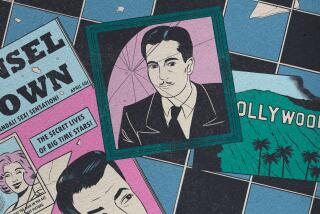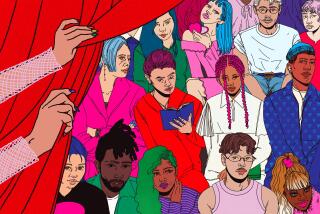Gays’ Reaction to Handling of Cunanan Case Is Mixed
- Share via
Even in death, Andrew Cunanan haunts the gay community, as gay leaders debate how the news media and law enforcement responded to the murderous spree of which he was suspected.
“Overall, media coverage was better than it would have been five years ago,” said Jim Key, communications director for the Los Angeles Gay & Lesbian Center.
The case of Cunanan--who was wanted in the murders of five men, including fashion designer Gianni Versace, before he apparently took his own life in Miami on Wednesday--was emotionally charged for gays. It featured a nationally watched manhunt in which both the suspect--a male prostitute and playboy from San Diego--and several of his victims, including Versace, were gay.
Key noted that although TV newscasts in the past often interviewed gays without showing their faces or with them hidden in shadows, man-in-the-street interviews during the hunt for Cunanan featured names and faces of interviewees in gay neighborhoods, with others walking in full view in the background.
The significance, Key said, is that “it’s important that the public see gay people in front of the camera. It sends a terrible message to both the gay and straight communities when reporters cannot find anyone who is willing to be identified publicly in front of the camera.
“Until five years ago, that was a problem.”
Liz Tracey, communications director for the Gay and Lesbian Alliance Against Defamation, concurred.
“People were very comfortable putting their face on TV, and the gay community came together in a very public way to help catch Cunanan,” she said.
But gay leaders also contended that some problems of stereotyping remained in the coverage.
For example, said Key, “if Gianni Versace had had a wife, it would have been reported immediately.” But the fact that Versace had a lover of 10 years was scarcely mentioned in the immediate wake of Versace’s killing, he complained, implicitly downgrading the importance of gay relationships.
Similarly, Key said, a prominent photo of Versace’s funeral showed a trio of mourners: Princess Diana, singer Elton John, and an unidentified man sharing John’s grief. Although the caption would have identified a heterosexual mourner’s spouse, the identity of David Furnish--John’s significant other and producer of a documentary on John’s life--went unnoted.
The issue is less ill will on the media’s part than its struggle to adjust to the rapidly changing mores of the gay community.
Until recently, the vast majority of gays did not want to come out publicly; many still don’t.
Over the past few years, however, a repeated theme within the gay community has been the importance of coming out as a political and social statement. That movement recently hit its high-water mark when comedian Ellen DeGeneres came out on her television show--marking the first time a lead character in a series has openly been identified as gay.
Also irking Key was the fact that after the Versace murder, KABC-TV ran a story on sheriff’s deputies in West Hollywood passing out fliers seeking help from hustlers if Cunanan returned here.
“The story made it seem as if Cunanan, who partied among the elite, would return as a street hustler,” said Key. “That was extremely unlikely.”
KABC news director Cheryl Fair said the piece was not intended to convey that Cunanan was likely to go to West Hollywood. The deputies’ rationale, she said, “was that Cunanan was a prostitute at times, that this is a transient population, so they come into contact with more people than [deputies] do” and could be a good source of information.
Rich Jennings, executive director of Hollywood Supports, a gay rights group focusing on the entertainment industries, was bothered by speculation based on a set of hair clippers found in Cunanan’s hotel room. FBI officials suggested that Cunanan may have shaved all his body hair and dressed as a woman. Jennings asked whether officials would have made the same pronouncement if they had found clippers in a straight man’s room.
“They gave no evidence of cross-dressing. But it tied into stereotypes of gay men spending a lot of time in women’s clothing,” he said.
More to Read
Sign up for Essential California
The most important California stories and recommendations in your inbox every morning.
You may occasionally receive promotional content from the Los Angeles Times.













